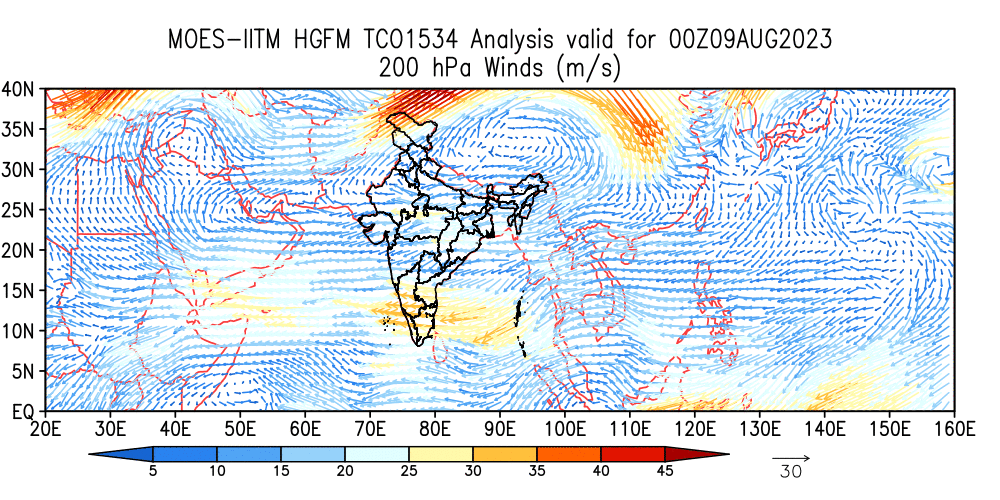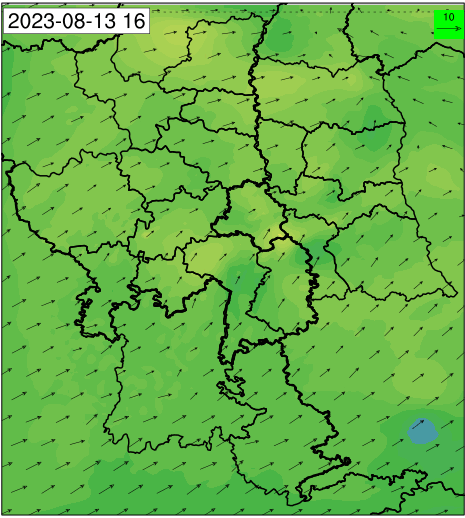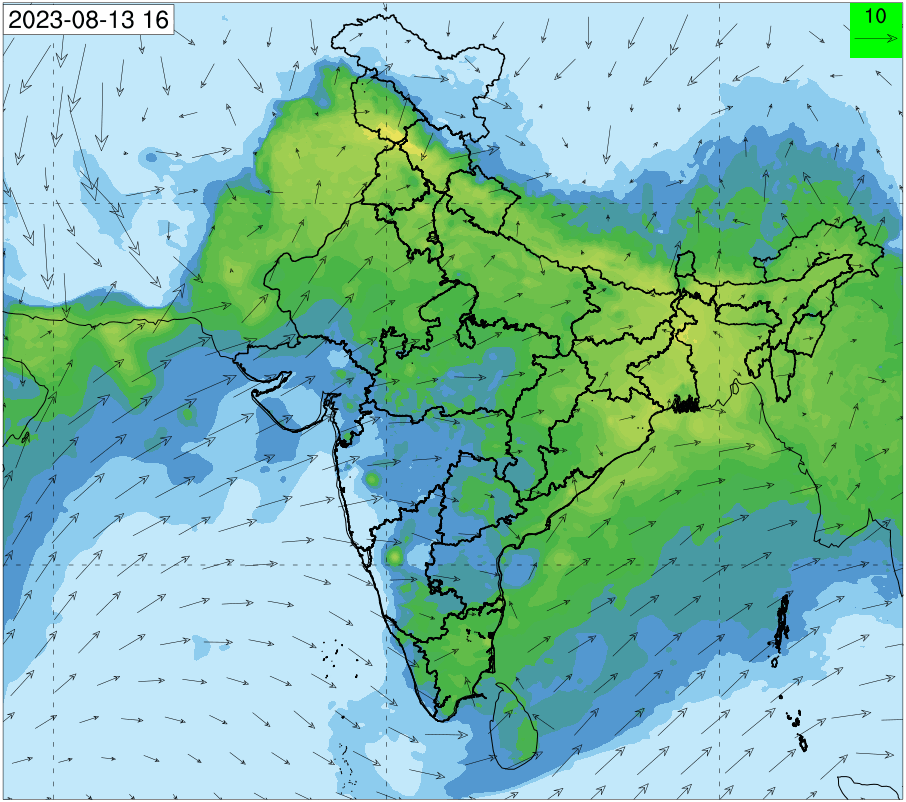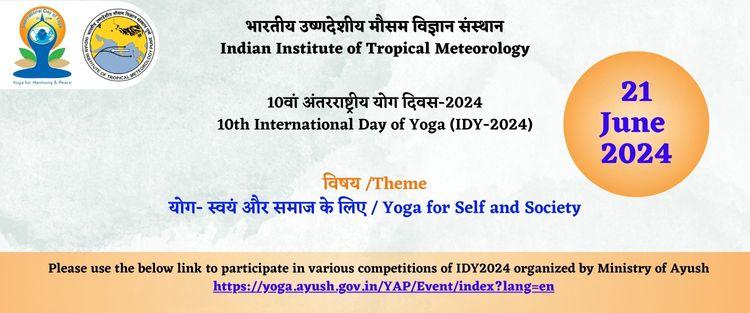Seminars / Lectures
New Report by IITM Scientists
General Document on Common Questions and Answers on Cloud Seeding
IITM Publication Highlights
Sensitivity of enhanced vertical resolution in the operational Global Forecast System (GFS) T1534 on the short to medium range forecast of Indian summer monsoon
 The sensitivity of enhanced vertical resolution in the operational short to medium-range weather forecast model (GFS T1534) over the Indian summer monsoon region during JJAS of the year 2020 is investigated. To find out the influence of enhanced vertical resolution, two separate forecast runs are carried out with GFS T1534 with L64 (CTRL) and L128 (EXPT). The model forecast evaluation indicates that EXPT shows improved precipitation distribution over the CI, Indo-Gangetic plains, and southern peninsula regions over the CTRL forecast. EXPT shows a considerable overestimation of rainfall over the northeast India, Himalayan foothills, WGs, and BOB region compared to both observation and CTRL. Preliminary analyses show that enhanced vertical resolution over the above mountainous region leads to enhanced vertical velocity and associated moisture convergence, which helps get excess rainfall over those areas. Apart from the above regions, the precipitation distribution over the central Indian landmass region shows improvement in rainfall PDF and CDF distribution. The heavy to very heavy and extreme rainfall distribution has improved in EXPT compared to the CTRL forecast for all the lead time during JJAS of 2020.
The sensitivity of enhanced vertical resolution in the operational short to medium-range weather forecast model (GFS T1534) over the Indian summer monsoon region during JJAS of the year 2020 is investigated. To find out the influence of enhanced vertical resolution, two separate forecast runs are carried out with GFS T1534 with L64 (CTRL) and L128 (EXPT). The model forecast evaluation indicates that EXPT shows improved precipitation distribution over the CI, Indo-Gangetic plains, and southern peninsula regions over the CTRL forecast. EXPT shows a considerable overestimation of rainfall over the northeast India, Himalayan foothills, WGs, and BOB region compared to both observation and CTRL. Preliminary analyses show that enhanced vertical resolution over the above mountainous region leads to enhanced vertical velocity and associated moisture convergence, which helps get excess rainfall over those areas. Apart from the above regions, the precipitation distribution over the central Indian landmass region shows improvement in rainfall PDF and CDF distribution. The heavy to very heavy and extreme rainfall distribution has improved in EXPT compared to the CTRL forecast for all the lead time during JJAS of 2020.
Ganai M., Phani M.K.R., Tirkey S., Mukhopadhyay P., Climate Dynamics, June 2024, DOI:10.1007/s00382-024-07316-w, 1-23
Read MoreLong range transport of South and East Asian anthropogenic aerosols counteracting Arctic warming
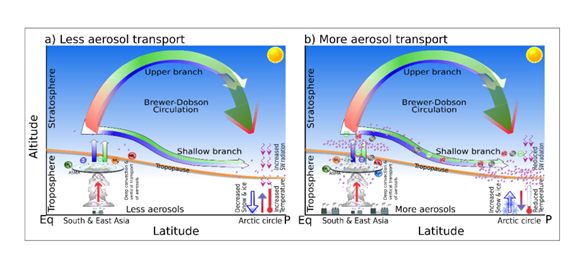 The large-scale convection during the Asian summer monsoon plays an important role in the rapid transport of boundary layer aerosols into the Asian summer monsoon anticyclone. The state-of-the-art ECHAM6–HAMMOZ aerosol-chemistry-climate model simulations show that East and South Asian anthropogenic emissions contribute significantly to the aerosol transported to the Arctic, which causes a higher negative net aerosol radiative forcing at the surface (dimming) of -0.09 ± 0.02 Wm-2 and -0.07 ± 0.02 Wm-2, respectively. Over the Arctic, the East Asian anthropogenic aerosols that include large amounts of sulfate cause a seasonal mean net radiative forcing at the top of the atmosphere (TOA) of -0.003±0.001Wm-2 and a surface cooling of -0.56 K while the black carbon dominated aerosol from South Asia shows a positive TOA forcing of +0.004 ± 0.001Wm-2 with an only minor surface cooling of -0.043 K. Overall, the long-range transport of South Asian aerosols results in a notably warming throughout the atmospheric column but minimal temperature response at the Arctic surface. Conversely, East Asian aerosols cool the troposphere and heat the lower stratosphere in the Arctic. The Asian aerosol thus plays an ambivalent role, with the East Asian sources in particular having the potential to counteract the rapid rise in Arctic temperatures and the associated melting of snow and ice.
The large-scale convection during the Asian summer monsoon plays an important role in the rapid transport of boundary layer aerosols into the Asian summer monsoon anticyclone. The state-of-the-art ECHAM6–HAMMOZ aerosol-chemistry-climate model simulations show that East and South Asian anthropogenic emissions contribute significantly to the aerosol transported to the Arctic, which causes a higher negative net aerosol radiative forcing at the surface (dimming) of -0.09 ± 0.02 Wm-2 and -0.07 ± 0.02 Wm-2, respectively. Over the Arctic, the East Asian anthropogenic aerosols that include large amounts of sulfate cause a seasonal mean net radiative forcing at the top of the atmosphere (TOA) of -0.003±0.001Wm-2 and a surface cooling of -0.56 K while the black carbon dominated aerosol from South Asia shows a positive TOA forcing of +0.004 ± 0.001Wm-2 with an only minor surface cooling of -0.043 K. Overall, the long-range transport of South Asian aerosols results in a notably warming throughout the atmospheric column but minimal temperature response at the Arctic surface. Conversely, East Asian aerosols cool the troposphere and heat the lower stratosphere in the Arctic. The Asian aerosol thus plays an ambivalent role, with the East Asian sources in particular having the potential to counteract the rapid rise in Arctic temperatures and the associated melting of snow and ice.
Fadnavis S., Sonbawne S.M., Laakso A., Ploeger F., Rap A., Heinold B., Sabin T.P., Müller R., npj Climate and Atmospheric Science, 7: 101, May 2024, DOI:10.1038/s41612-024-00633-1, 1-11
Read MoreIn-situ observations of cloud microphysics over Arabian Sea during dust transport events
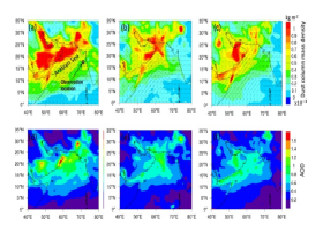 This study illustrates in situ measurements of clouds and precipitation within the shallow and deep cumulus over the north-eastern Arabian Sea region during the Indian monsoon with a focus on droplet spectral parameters. The observational period showed a significant incursion of Arabian dust and the presence of giant cloud condensation nuclei (GCCN), modifying the cloud and precipitation spectral properties. A rapid broadening of droplet size distribution (DSD) near to the cloud base was noted. 𝜇m and the large drizzle drops (or ice hydrometeors) with size range 100–6400 𝜇m are parameterized using the gamma function distributions useful for large-scale cloud models.
This study illustrates in situ measurements of clouds and precipitation within the shallow and deep cumulus over the north-eastern Arabian Sea region during the Indian monsoon with a focus on droplet spectral parameters. The observational period showed a significant incursion of Arabian dust and the presence of giant cloud condensation nuclei (GCCN), modifying the cloud and precipitation spectral properties. A rapid broadening of droplet size distribution (DSD) near to the cloud base was noted. 𝜇m and the large drizzle drops (or ice hydrometeors) with size range 100–6400 𝜇m are parameterized using the gamma function distributions useful for large-scale cloud models.
Bera S., Patade S., Prabhakaran Thara, Environmental Research Communications, 6: 055009, May 2024, DOI:10.1088/2515-7620/ad443d, 1-17
Read MoreDecision Support System version 1.0 (DSS v1.0) for air quality management in Delhi, India
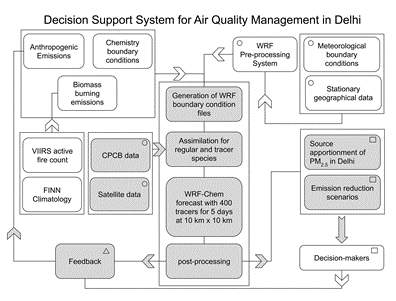 The newly developed Decision Support System version 1.0 (DSS v1.0) with certain unique features helps the decision-makers to form policies for air quality management activities in Delhi, India. In addition to standard air quality forecasts, DSS provides the contributions of the 19 surrounding districts, individual emission sectors in Delhi, and the biomass-burning activities (occurring primarily in the northwestern states of India in the post-monsoon season) to the PM2.5 mass concentration in Delhi. The system also quantifies the effects of emission source-level interventions on the forecasted air pollution in the city. With the help of DSS, the policymakers can get a warning about future severe air pollution events and understand the possible causes for the event and get a quantitative idea about the efficacy of the source-level interventions on the forecasted event.
The newly developed Decision Support System version 1.0 (DSS v1.0) with certain unique features helps the decision-makers to form policies for air quality management activities in Delhi, India. In addition to standard air quality forecasts, DSS provides the contributions of the 19 surrounding districts, individual emission sectors in Delhi, and the biomass-burning activities (occurring primarily in the northwestern states of India in the post-monsoon season) to the PM2.5 mass concentration in Delhi. The system also quantifies the effects of emission source-level interventions on the forecasted air pollution in the city. With the help of DSS, the policymakers can get a warning about future severe air pollution events and understand the possible causes for the event and get a quantitative idea about the efficacy of the source-level interventions on the forecasted event.
Govardhan G., Ghude S.D., Kumar R., Sharma S., Gunwani P., Jena C., Yadav P., Ingle S., Debnath S., Pawar P., Acharja P., Jat R., Kalita G., Ambulkar R., Kulkarni S., Kaginalkar A., Soni V. K., Nanjundiah R.S., Rajeevan M., Geoscientific Model Development, 17, April 2024, DOI:10.5194/gmd-17-2617-2024, 2617–2640
Read MoreNew Publications
Characteristics of new particle formation events in a mountain semi-rural location in India
Victor J.N., Buchunde P., Sebastian M., Kanawade V.P., Siingh D., Mukherjee Subrata, Potdar S.S., Dharmaraj T., Pandithurai G., Atmospheric Environment, 324: 120414, May 2024, DOI:10.1016/j.atmosenv.2024.120414, 1-13
Optical and Radiative Characteristics of the Lower Part of Cirrus Clouds Over a Rain Shadow Region in South Peninsular India
Sunil S., Padmakumari B.,Pure and Applied Geophysics, 181, May 2024, DOI:10.1007/s00024-024-03466-4, 1697–1724
Response of west pacific subtropical high to northern hemispheric warming: insights from paleo climate models
Priya P., Mujumdar M., Sanap S.D., Krishnan R., Climate Dynamics, Online, April 2024, DOI:10.1007/s00382-024-07194-2, 1-17
Trends of lightning flash density over India during different seasons
Prasanna K., Gopalakrishnan V., Pawar S.D., International Journal of Climatology, 44, April 2024, DOI:10.1002/joc.8400, 1587-1610
IITM Events
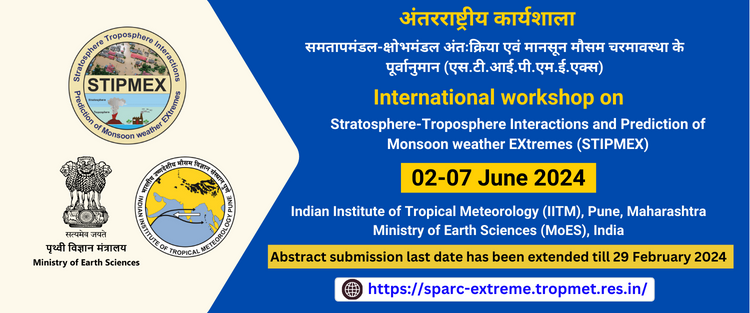
International Workshop on Stratosphere-Troposphere Interactions and Prediction of Monsoon weather EXtremes (STIPMEX)
(02-07 June 2024)
The workshop foster all observational/modelling aspects of the stratosphere-troposphere coupling processes and extreme weather events associated with Asian summer monsoon. During the workshop, one-day pre-workshop Training Session for students and early career scientists/professionals, an Interactive Poster session and Public Talks by Eminent Speaker were also arranged.

World Environment Day 2024
(26 May - 05 June 2024)
Various competitions, Interactive Session, Release of Video documentary, Mission LiFE Pledge under the theme “Desertification, Land Restoration and Drought Resilience” were arranged for Student and common public on offline as well as online social media platform.


